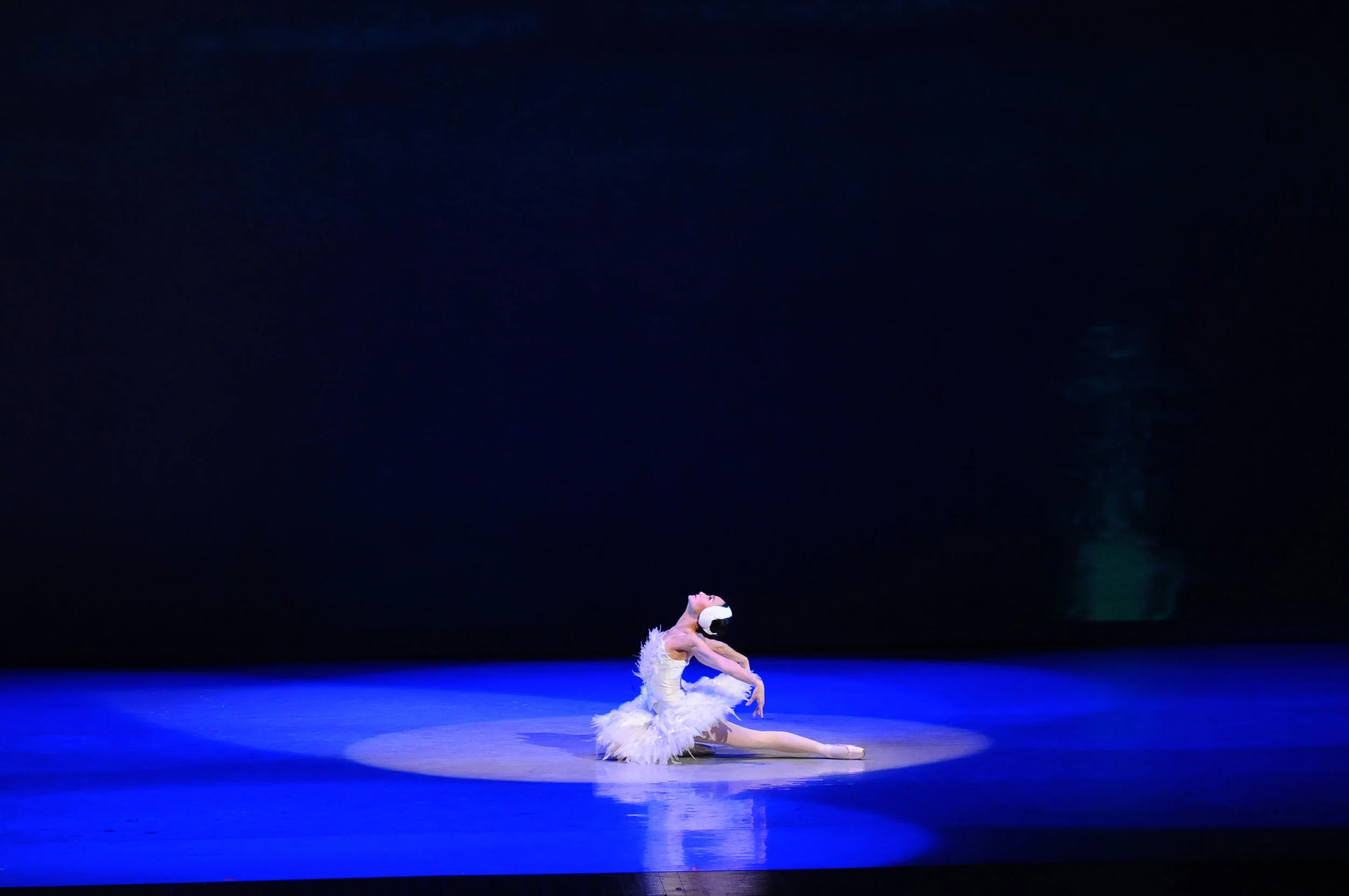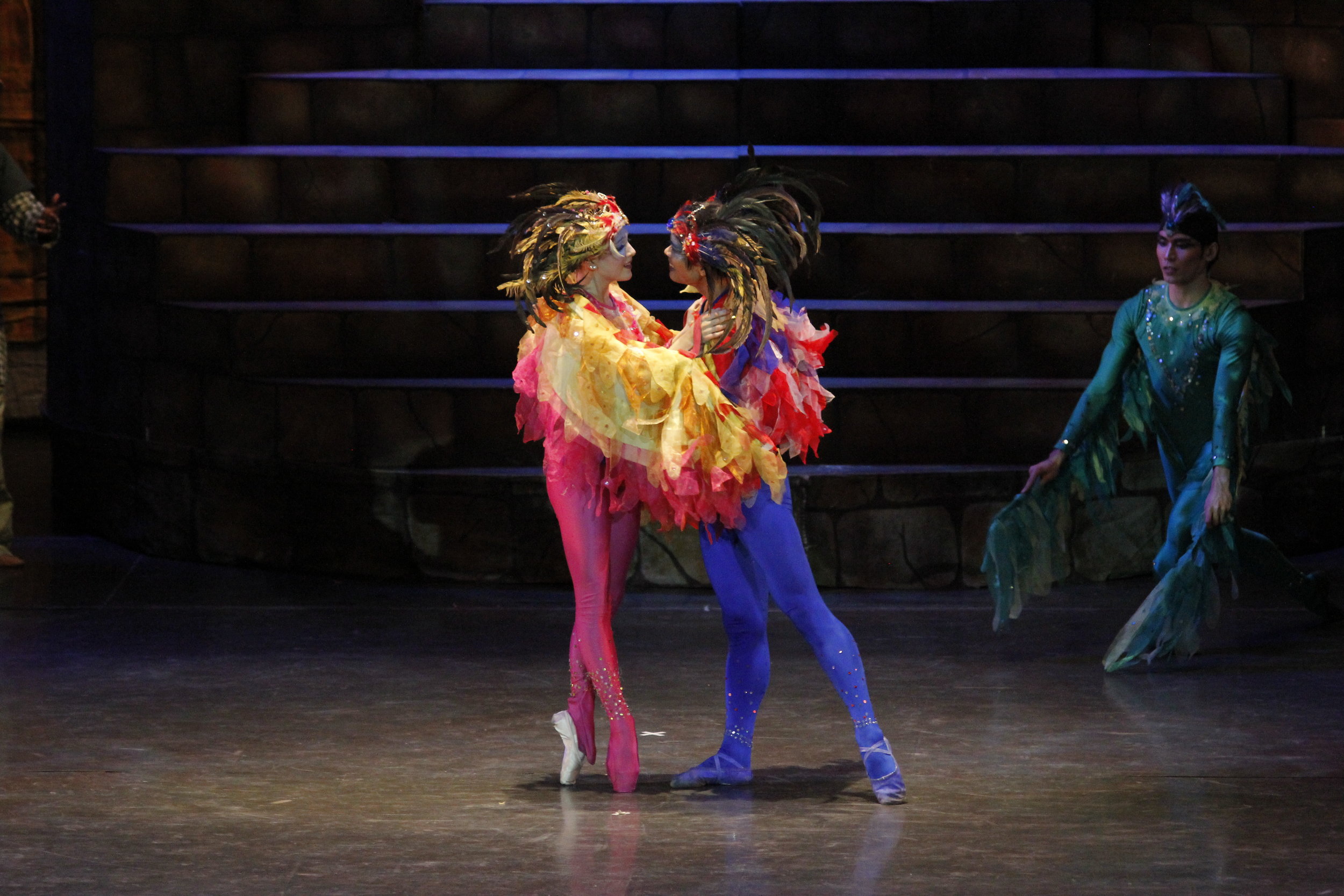Winged ballets: The Dying Swan
Birds are the focus of some of ballet’s best known pieces such as Swan Lake and Firebird, and continue to spur the creation of new ones. There’s just something about these winged creatures that apparently challenges choreographers to channel their unique movements and character through dance.
When Ballet Manila opens its 22nd performance season billed as "Flights of Fantasy," a bird takes centerstage once more. The famed mythical bird of Philippine lore becomes the subject of resident choreographer Gerardo Francisco’s Ibong Adarna, promising to be a dazzling spectacle in the tradition of Ballet Manila’s blockbuster Tatlong Kuwento ni Lola Basyang and its equally successful sequel, Tatlo Pang Kuwento ni Lola Basyang.
To usher in the world premiere of Ibong Adarna on August 26 and the return of the ballet classic Swan Lake in October, we look back – through this series – at the bird-inspired ballets that have taken flight and even soared at Ballet Manila.
The Dying Swan poignantly captures the final moments in a swan’s life.
The Dying Swan lasts only three minutes, but it can rightly be described as one of the most hauntingly beautiful ballet pieces ever created. Choreographed by Mikhail Fokine for ballerina Anna Pavlova, it was first presented in St. Petersburg, Russia in 1905. Using the music Le Cygne by Camille Saint-Saens from Le Carnaval des animaux, it poignantly captures the final moments in a swan’s life.
Ballet Manila artistic director Lisa Macuja-Elizalde danced The Dying Swan as part of the epic The Legends and the Classics, which featured the prima ballerina with classical piano virtuoso Cecile Licad and Broadway actress Lea Salonga. The concert was staged at the Cultural Center of the Philippines Main Theater in March 2012.
Macuja-Elizalde thought that it was an apt piece for her to dance at that phase in her career, with the inevitability of retirement already looming. The idea of doing it in the latter years of her dancing life was first broached years earlier by Natalia Raldugina, Ballet Manila’s guest ballet mistress from St. Petersburg. Though the ballerina hesitated then, she felt the timing was just right for The Legends and the Classics.
She says the particular challenge of The Dying Swan is its execution. “Just like dancing Odette/Odile in Swan Lake, it is a choreographic masterpiece that only few ballerinas touch because it is very difficult to do. I think it is just hard to be weak and still dance at the same time. It is hard to portray physical weakness when you are doing something so athletic like dancing on your toes. Also, you hardly go off pointe during the entire piece. That can be painful.”
For the show, Macuja-Elizalde danced to live music by pianist Cecile Licad and cellist Wilfredo Pasamba who was flown in from abroad specifically just to play this number. There was a hush as the ballerina flitted onstage and, in a few precious minutes, essayed the movements of a swan on the wane.
Critic Rosalinda Orosa wrote of that performance: “Wilfredo Pasamba and Cecile provided most delicate and sensitive accompaniment as cellist and pianist, yet focus was still on the dancer. In The Dying Swan…Lisa magnetized by gliding with ethereal grace towards inevitable death.”
Lisa Macuja-Elizalde dances The Dying Swan to live music by pianist Cecile Licad and cellist Wilfredo Pasamba in The Legends and the Classics. Photo by Ocs Alvarez






